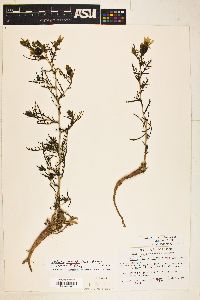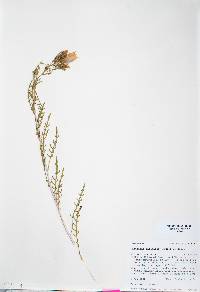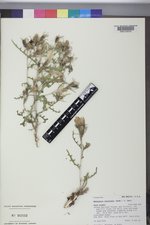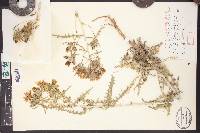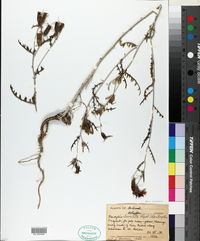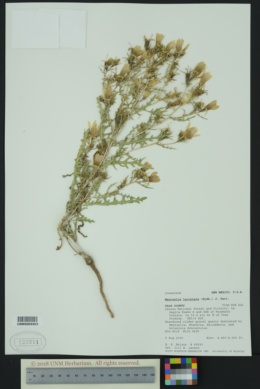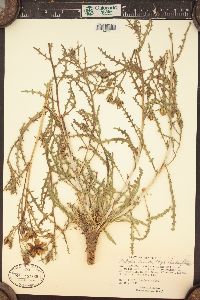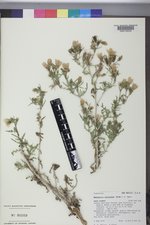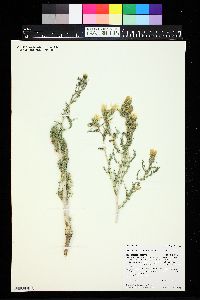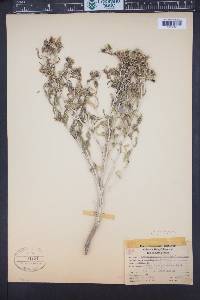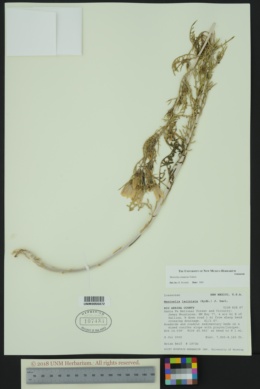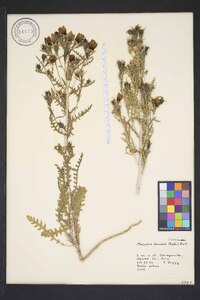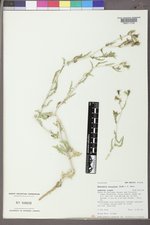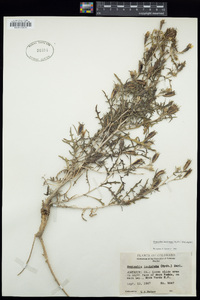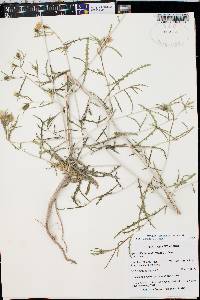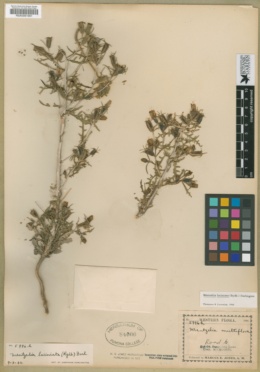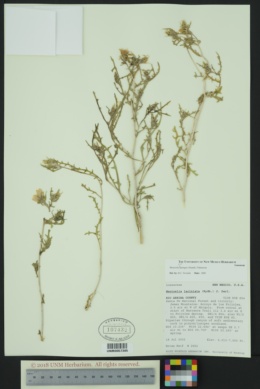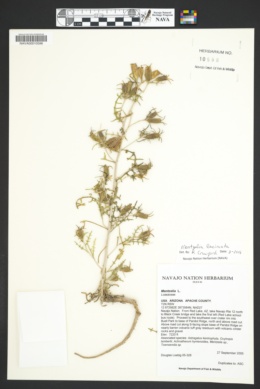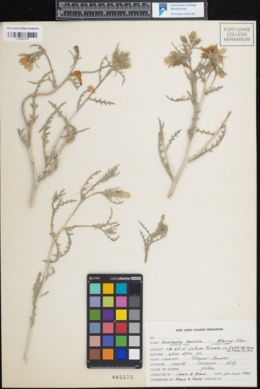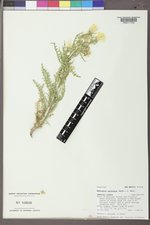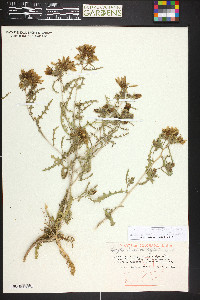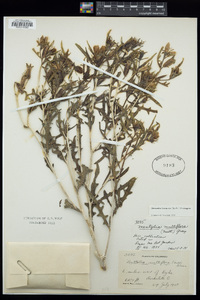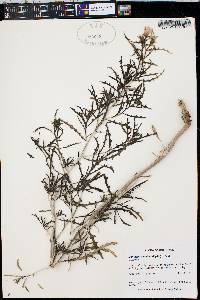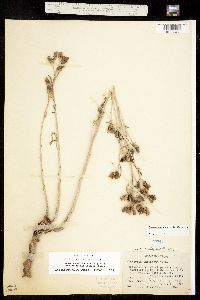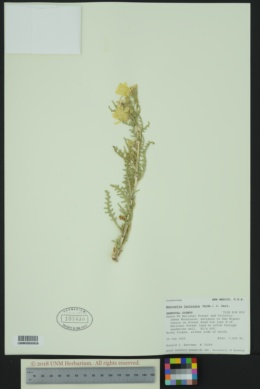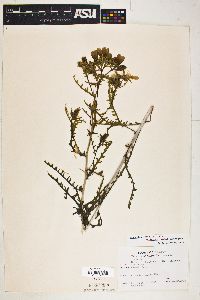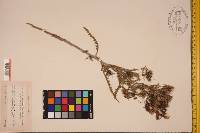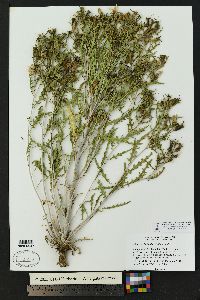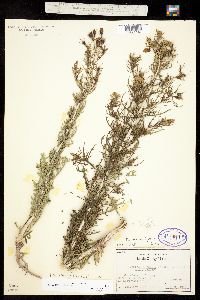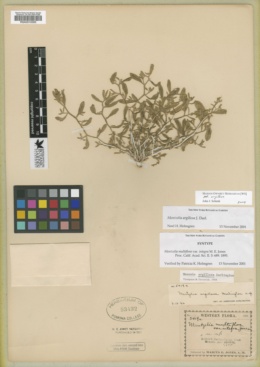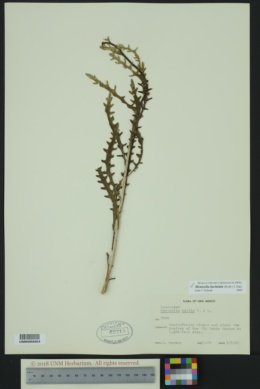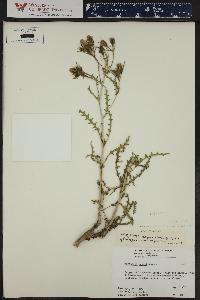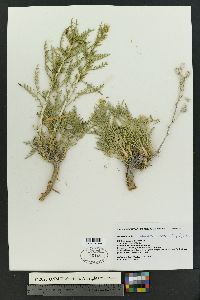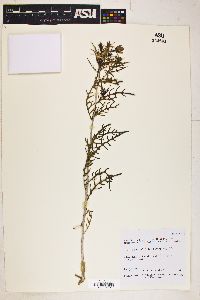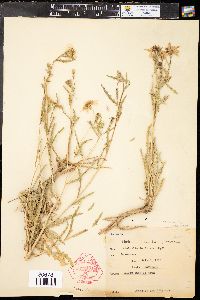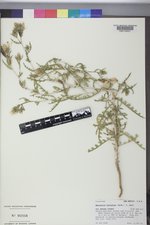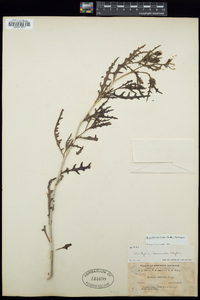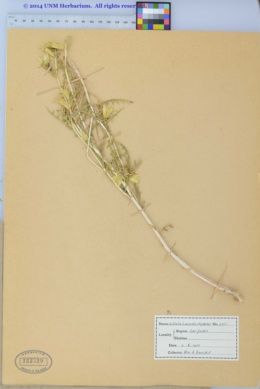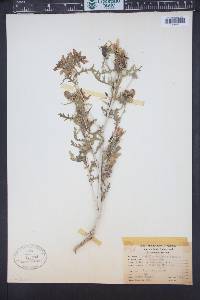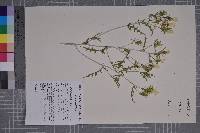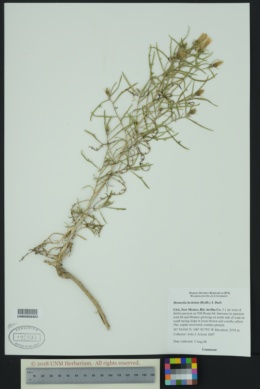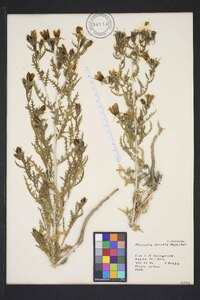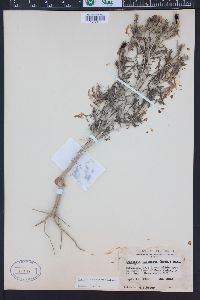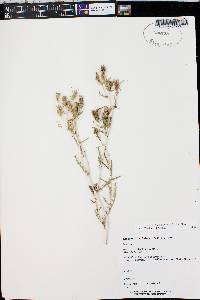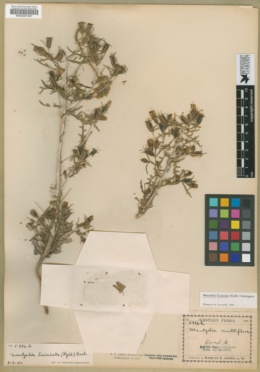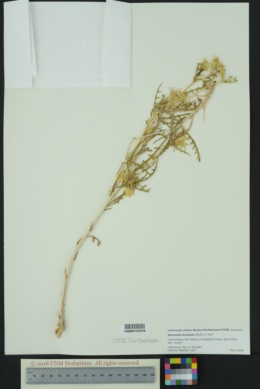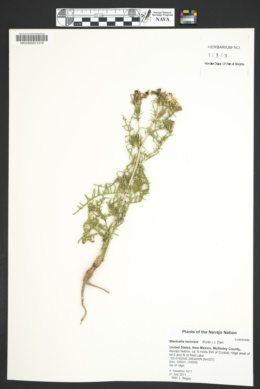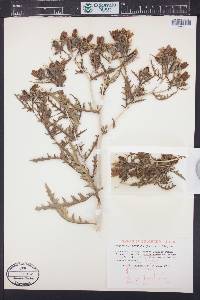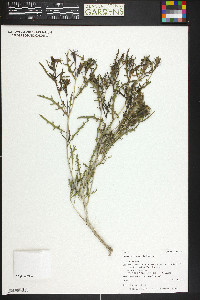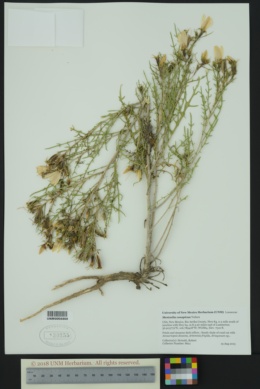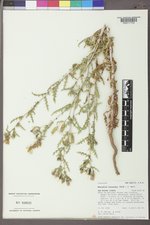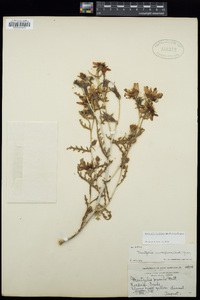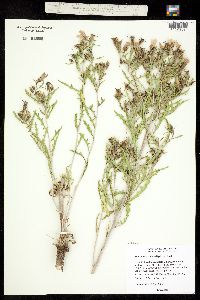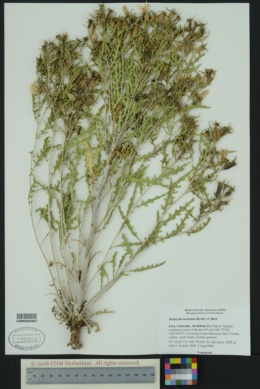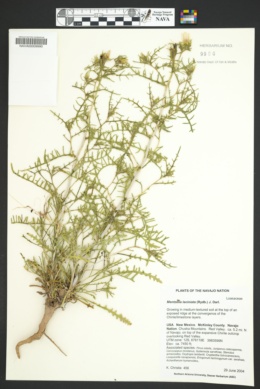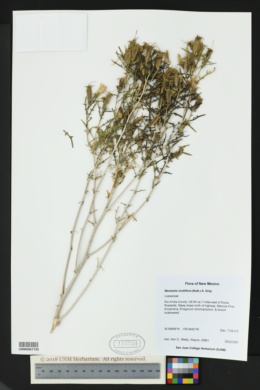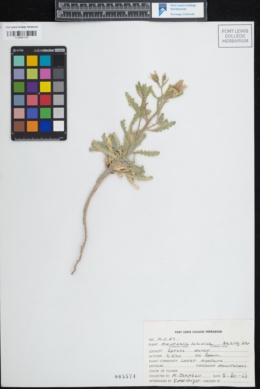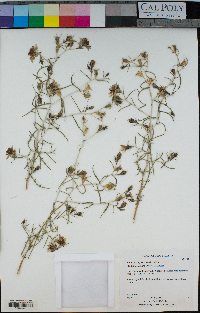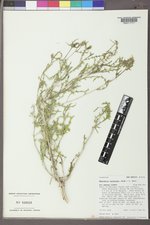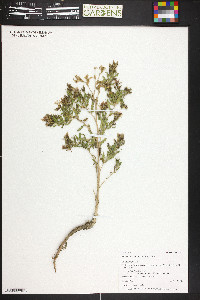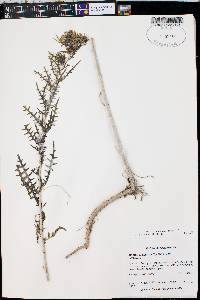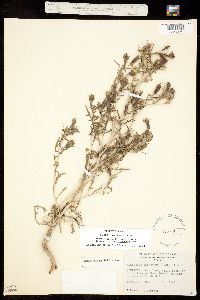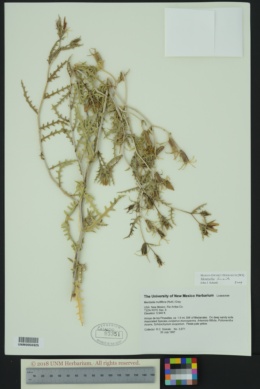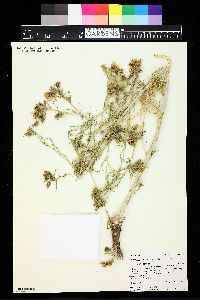Mentzelia laciniata
|
|
|
|
Family: Loasaceae
Cut-Leaf Blazingstar
[Nuttallia laciniata Wooton & Standl.] |
PLANTS: Perennials. STEMS: to 50 cm tall, usually producing branches along their entire length. LEAVES: to 8 cm long, to 3 cm wide, sessile, elliptic to lanceolate or linear; margins deeply and narrowly pinnately lobed, sometimes approaching entire and then linear; upper leaves without clasping bases or clasping basal lobes. FLOWERS: pedicellate, subtended by 0-2 linear to lanceolate, entire or lobed bracts, these sometimes fused to ovary; petals yellow, 8-15 mm long, 3-5 mm wide,with trichomes at apex only; staminodia or petaloid stamens 3-5, slightly smaller than petals; outer several whorls of stamens with slightly broadened filaments; style 7-10 mm long; stigmatic papillae inconspicuous. CAPSULES: cylindric, 9-15 mm long. SEEDS: horizontal, winged, oval to obovate; testa cells with wavy adjoining walls, the surface walls with 5-10 small bumps. 2n = 20. NOTES: (not mapped): possibly in e Apache co.; 2000-2200 m (6500-7200 ft); probably Jun-Sep; sw CO, ne NM. This taxon has been collected in NM in the vicinity of Green Knobs (north of Ft. Defiance), ca. 1.5 miles east of the AZ border. These collections have been mistakenly reported as AZ records, both as M. laciniata, and with an incorrect identification, as M. humilis (A. Gray) J. Darl., a similar species that is most common in se NM and w TX, on gypsum. REFERENCES: Christy, Charlotte M. 1998. Loasaceae. J. Ariz. - Nev. Acad. Sci. 30(2): 96. VPAP (Christy 1998), Heil et al. 2013, Allred and Ivey 2012 Duration: Perennial Nativity: Native Lifeform: Forb/Herb General: Perennial herbs, to 60 cm tall, from a stout woody taproot; stems erect, white when mature, usually branching throughout. Leaves: Basal leaves petiolate, stem leaves alternate and mostly sessile; blades to 10 cm long and up to 3 cm wide, elliptic to lanceolate or linear in outline, deeply and narrowly pinnately lobed, the basal leaves and narrowest stem leaves sometimes more shallowly lobed. Flowers: Yellow, in few-flowered clusters at branch tips; most flowers subtended by 1-2 bracts which look like the leaves but smaller, or else are simple and linear; bracts are sometimes fused to the ovary; sepals and petals attached to the top of the ovary (epigynous); sepals 5 per flower, 5-6 mm long, persistent in fruit; petals 5, yellow, widely spreading, oblanceolate to spatulate, 8-15 mm long and 3-5 mm wide; several outer rows of stamens have enlarged filaments, making them resemble petals. Fruits: Capsules cylindrical, 9-18 mm long, 3-5 mm wide, straight; seeds 2-3 mm long, oblong to oval, with a minute wing up to 0.25 mm wide. Ecology: Found in sandy or clay soils, in desert scrub and pinyon-juniper communities, from 6,000-7,200 ft (1829-2195 m); flowers June-October. Distribution: CO, NM, and ne AZ. Notes: Distinguished based on its leaves which are deeply divided into narrow lobes, with the divisions cut to about 2 mm from the leaf rachis; the showy yellow flowers, with petals 8-15 mm long, are somewhat larger than many other Mentzelia spp; and the seeds which are obscurely winged. M. filifolia is similar but the leaves are divided into narrower, filiform lobes about 1 mm wide; and the seeds are a little larger, about 3 mm long. Also commonly confused with M. humilis, a species with similar leaves but the flowers are white; the seeds are more broadly winged; it prefers gypseous soils; and it is more common in the southern parts of New Mexico and adjacent Texas. Mentzelia is a notoriously difficult genus with an overwhelming number of species and the keys are not easy to use. It is important to make collections with mature seed pods, because many key characters deal with the seeds and capsules, and some can't be seen with a hand lens in the field. Ethnobotany: Ramah Navajo used an infusion of the flowers as an eyewash. Etymology: Mentzelia is named for Christian Mentzel (1622-1701), a German botanist, botanical author and physician; laciniata means cut into narrow lobes, alluding to the leaves. Synonyms: None Editor: AHazelton 2017 |


